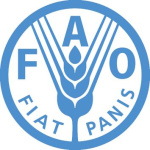- Industry: Agriculture
- Number of terms: 87409
- Number of blossaries: 0
- Company Profile:
Established in October 1945 with the objective of eliminating hunger and improving nutrition and standards of living by increasing agricultural productivity, FAO coordinates the efforts of governments and technical agencies in programs for developing agriculture, forestry, fisheries, and land and ...
The soluble liquid fraction of a sample after centrifugation or precipitation of insoluble solids.
Industry:Biotechnology
The source plant from which cuttings or explants are made. Stock plants are usually maintained carefully in an optimum state for (sometimes prolonged) explant use. Preferably they are certified-pathogen-free plants.
Industry:Biotechnology
The source plant or mother plant from which is taken the explant used to initiate a culture. <i>cf</i> donor plant.
Industry:Biotechnology
The space (periplasmic space) between the cell (cytoplasmic) membrane of a bacterium or fungus and the outer membrane or cell wall.
Industry:Biotechnology
The specific addition of phosphate groups, sugars (glycosylation), or other molecules to a protein after it has been synthesized.
Industry:Biotechnology
The specific and accurate synthesis of RNA in the test tube using purified DNA preparations as a template. So-called "coupled systems" may be obtained from <i>E. coli</i> which carry out both mRNA synthesis and its translation into protein. For eukaryotes, separate cell-free systems have to be set up to demonstrate the activity of the three functionally distinct RNA polymerase complexes.
Industry:Biotechnology
The specific and accurate synthesis of RNA in the test tube using purified DNA preparations as a template. So-called "coupled systems" may be obtained from <i>E. coli</i> which carry out both mRNA synthesis and its translation into protein. For eukaryotes, separate cell-free systems have to be set up to demonstrate the activity of the three functionally distinct RNA polymerase complexes.
Industry:Biotechnology
The specific nucleotide sequence in DNA that is recognized by a type II restriction endonuclease and within which it makes a double-stranded cut. Restriction sites usually comprise four or six base pairs that typically are palindromic (q.v.),
e.g., 5´GGCC3´
3´CCGG5´
The two strands may be cut either opposite to one another, to create blunt ends, or in a staggered manner, giving sticky ends, depending on the enzyme involved.
Industry:Biotechnology
The specification of a peptide sequence, by the code contained in DNA molecules.
Industry:Biotechnology
